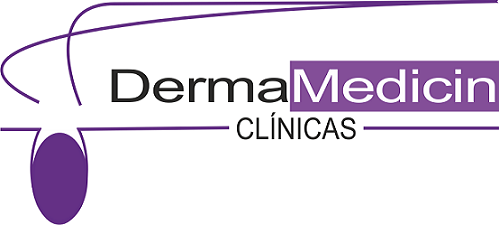
Trichology Unit
Trichology is the part of the medicine that diagnose and treatment the disorders and diseases of the scalp and hair. Hair loss is usually called alopecia. Within alopecia there are some that do not leave a scar, so the hair can be recovered (the most common) and others that leave a scar, so in that area the solution would be through a hair graft. Among those that do not leave a scar, we have the most frequent: androgenetic alopecia, alopecia areata and telogen effluvium. It is a topic in which a lot of research is done and we have more and more means for its diagnosis (such as trichoscopy, which we usually perform in the consultation or the trichogram, which can be performed if there are diagnostic doubts) and also more treatments.
Androgenetic alopecia is caused by two factors, one is hormonal imbalance (androgenic, androgens are masculinizing hormones that are also present in women) and the other is the genetic factor (family inheritance). We cannot change the genetic factor, it is what we have to do, but the hormonal factor can be regulated, that is where the treatments are directed. In addition, substances are also used to help new hair appear and existing hair to thicken, increasing the amount of blood vascularization that reaches the follicle or infiltrating growth factors that help the hair directly (a very novel treatment with good results. ). An analysis must be performed to rule out other causes that are making our condition worse.

Alopecia areata is a type of hair loss that occurs because the hair is attacked by our own defenses (it is part of the so-called autoimmune diseases). The hair on the head can be affected, but also the hair on the eyebrows, eyelashes and the rest of the body. It is recoverable even years after its onset and there are multiple treatments for it. It is important to have your thyroid hormones checked, some vitamins and a check-up done to rule out other autoimmune diseases (celiac disease, atrophic gastrits, vitiligo).
Telogen effluvium is a very common cause of hair loss; it can occur for multiple reasons (low iron, low vitamins, after surgery, fever, significant sun exposure...). It occurs 3 months after being exposed to the factor that triggers it and requires an analytical study to determine the cause and, with appropriate treatment, the patient recovers satisfactorily. Tobacco is a factor that has currently been studied a lot and can also cause outbreaks of telogen effluvium.
Las alopecias cicatriciales precisan un estudio detallado y la realización de una biopsia cutánea para establecer exactamente el diagnóstico, aunque la tricoscopia ya nos ayuda mucho. Los tratamientos cambian mucho según se trate de un cuadro u otro. Dentro de estas se encuentra el liquen plano pilar, el lupus eritematoso crónico, la foliculitis decalvante, la celulits disecante, la pustulosis erosiva.
Scarring or cicatricial alopecia requires a detailed study and a skin biopsy to establish the exact diagnosis, although trichoscopy already helps us a lot. Treatments change a lot depending on whether it is one condition or another. Among these are lichen planus pilaris, chronic lupus erythematosus, folliculitis decalvans, dissecting cellulite, and erosive pustulosis.
Frontal fibrosing alopecia is a special type of alopecia that causes loss of eyebrows and the frontal hairline (like a headband). It requires a diagnosis as early as possible to establish treatment and prevent it from progressing.
In children there are specific hair disorders, such as trichothiodystrophy, Netherton syndrome or loose anagen syndrome, which require study with trichoscopy, trichogram and even electron microscopy. We must think about this in children with hair that looks uncombable, fragile or that does not grow.
Some basic recommendations for hair care, such as not combing wet hair and avoiding the use of irons and straightening, are interesting to take into account for the general population.
Our specialist team is:
- Dra. Nayra Merino: Dermatologist and Trichology and Hair Transplant Master.
- Dra. Solange Castro: Aesthetic doctor with specific training in Trichology and Trichoscopy.
- Dra. Noelia Hernández: Dermatologist with a high experience.
- Dra. Maria Eugenia Gaviño: Aesthetic Doctor with specific training in alopecia treatments.


